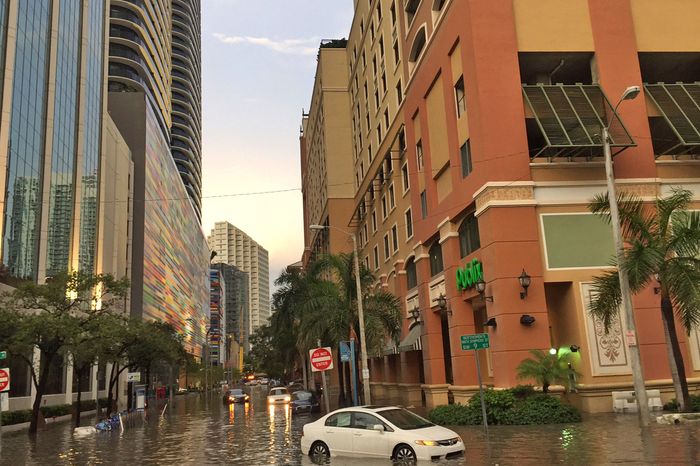
Last weekend, Elon Musk claimed that he’d had a conversation with Florida Governor Ron DeSantis about his Boring Company project, which builds very short, very small tunnels for cars. “Cars & trucks stuck in traffic generate megatons of toxic gases & particulate, but @boringcompany road tunnels under Miami would solve traffic & be an example to the world,” he tweeted. “If Governor & Mayor want this done, we will do it.” This was at 4 a.m. Miami time, but almost immediately, the city’s mayor, Francis Suarez, tweeted his approval: “Count me in,” he said, calling Musk’s plan a “no brainer.”
Now before we write this off as yet another example of Musk’s perpetual grift of making empty promises to city leaders that are amplified by his 42.6 million followers, let’s consider that there might be a reason why Miami doesn’t have a subway. Or why many of its homes are built without basements. Or why the city has already spent hundreds of millions of dollars just to make its streets navigable to cars today — building a pump system to mitigate the flooding Miami now faces even when no storms are on the horizon.
“It’s the sinkhole capital of the United States, let’s start from there,” says Mika McKinnon, a field geophysicist and disaster researcher based in Vancouver. The ground beneath Miami is a highly dissolvable limestone karst that’s filled with cavities and caverns just like the sea floor. “If you want to have a tunnel, you need to pump the water out of the tunnel as you go,” she says. “And when you hit a cave or you puncture a cavity, it changes the pressure. It’s like popping your car into neutral while you’re on the highway.” There are tunnels in Miami, but they’re astronomically expensive — the Port of Miami built less than a mile of tunnel below a shallow channel for about $1 billion — and cheaper tunneling is the thrust of Musk’s endeavor (although whether or not the Boring Company has truly been able to cut tunneling costs is still up for debate). But the biggest issue is introducing the risk of collapse to what lies above. “I’d be asking them what their legal liability plan is,” says McKinnon. “Because part of the issue with the changing of the water table is that it won’t be a direct cause and effect — 30 blocks away is what is going to sink. This is not a feasible project without sinkholes, so what will they do when they get sued?” It’s quite possible Musk has convinced DeSantis that he’s thought of all that. Or maybe he’s making the whole conversation up; remember when he claimed to have “verbal approval” for a hyperloop tunnel from New York City to D.C.?
Part of the motivation behind Suarez’s sycophancy may be that he’s trying to reinvent Miami as a tech utopia by wooing remote-working founders newly untethered from corporate campuses. Musk’s arrival would be yet another selling tool to lure startups away from Silicon Valley. But a strategy to inundate the city with more residents at this particular moment also comes with grave concerns, notes McKinnon. “Miami is arguably one of the most vulnerable cities for sea-level rise,” she says. “It’s a lost city. It’s a zombie city. Buying coastal property in Miami is like throwing your money into the ocean.” By 2100 it’s estimated that a large portion of Miami-Dade County will be rendered uninhabitable by up to five feet of rising ocean. Nearly one million residents are likely to be displaced.
But let’s pretend, for a minute, that Musk, who claims to want to address the problem of climate change, does understand the basic science behind it. Now he’s peddling false hopes for stopping climate change to a city that’s already suffering the very worst consequences of this future? It’s the transportation equivalent of building luxury towers high above the threat of sea-level rise while leaving the rest of the population to drown. Which is exactly what Miami is doing as well.
There may finally be a light at the end of this tunnel. The Boring Company’s rise was directly enabled by the Trump administration, particularly when Musk got his tunnels name-checked as one of the “transformative” — read: speculative bullshit — projects that would get $20 billion in federal funding in the announcements for a never-realized infrastructure plan. This was followed by former Transportation secretary Elaine Chao’s very targeted loosening of regulations around those so-called emerging technologies “such as potential advances in tunneling technology and hyperloop.” Joe Biden’s incoming Transportation administration (hi, soon-to-be-confirmed Secretary Pete!) should train a close eye on how Musk is using his power — and, recently, significant profits — to make what are already very serious problems for cities even worse.
